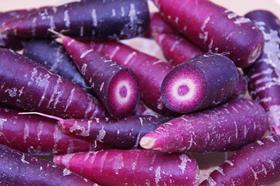
The British vegetable industry is breathing a collective sigh of relief as the tight supply period of early Spring seems to have finally passed over.
Headaches began in autumn and early winter as mild temperatures brought cauliflower and spring green crops forward, resulting in the recent shortage and high prices. But growing regions of Cornwall and Lincolnshire now appear to be back on track, with wet conditions and cool temperatures only a slight hiccup to planting programmes.
“For the majority of Cornish growers, the cauli and spring green season has been a disaster – it’s been one of the worst in history, mainly due to the mild weather up until mid January,” explains Greville Richards, managing director of Southern England Farms. “We had a very early crop, in some cases it was two months ahead of schedule – and they had similar problems in Lincolnshire. That left retailers with a massive shortage throughout March, up until a couple of days ago. There is still the odd load of Spanish or French, but the majority of people are now self-sufficient,” he says, adding that Cornish growers are now only about a week behind.
“We’ve had a very cool spring and persistent rain, so planting has been a real nightmare with only 11 planting days in seven weeks, where we would usually expect to plant two out of four. Although conditions in Lincolnshire have been fine, they haven’t had the temperatures. It’s probably going to delay the season on English brassicas. If we have another week of cool temperatures crop will be around two weeks late, arriving around mid to late June.”
Commercial director of Lincolnshire Field Products, Martin Tate, says: “It’s been a challenging first four months of the year. March has been expensive for a lot of people as there’s been a lack of UK availability, specifically on cauliflower and spring greens. Spanish broccoli has had a routine season. On a positive note we are now back to where we would expect to be. The weather is now more normal and the shortages have been and gone.”
Short-term supply issues aside, the British vegetables market seems to be buoyant with value and volumes up 1.1 and 4.2 per cent respectively [KWP 52 w/e 27 March]. This is mainly driven by shoppers buying more often, says Kantar, with legumes seeing five per cent growth and brassicas up 2.1 per cent.
Martin Evans, managing director of carrot grower Freshgro, is seeing healthy sales in Chantenay carrots, if not in maincrop. “Chantenays are looking strong – we have good availability and sales have been strong – we’re about 12 per cent up year on year. It reflects carrot sales in general – quality is suffering a bit so people are trading up.”
Evans believes there is a change in attitudes among several retailers – where conversations have been fixated on price for the past couple of years, now buyers are more open to NPD and innovation.
“The discounter challenge is still there – but a lot of people are now interested in NPD, and that’s quite refreshing really,” he says. “It hasn’t been on the agenda for a few years. It’s still green shoots at the moment, but these conversations have just not been around until recently. It’s all been about rationalising and discounting.”
Freshgro’s tri-coloured Chantenays have been popular with foodservice firms for the past two or three years, says Evans, but now multiple retailers are also showing an interest. Elsewhere, maincrop carrots are still being hit by retail deflation. “On maincrop the price war is still a massive issue – carrots are priced vertically and not through supply and demand,” says Evans.
Producer organisation Red Star Growers is late harvesting asparagus and salad onions due to the poor conditions, says commercial director Andrew Hartley, and warns other categories may be affected. “2016 looks to be challenging after such a mild winter, then we’ve had a wet and cold spring, and the current wet period has put much of the spring farming activities behind schedule. This could really affect produce start dates throughout early summer,” he says. “Our customer programmes have generally been good and slightly growing every year. We are always trialling new products as this is an important process of supplying multiple customers.”
Of the sub-categories in veg that are peforming well, Tate expects the “phenomenon” surrounding kale and speciality broccoli to continue. “But I don’t think that’s at the expense of core vegetable lines, which are holding their own,” he says. “There is certainly stability and indeed growth in the core brassica range. Courgettes had a good winter, and they continue to see ongoing demand.”



